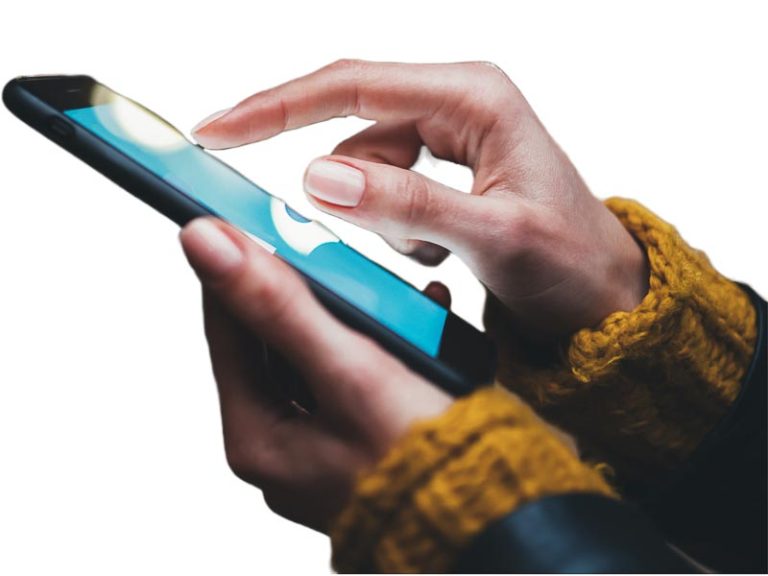
01/21/2015 | Digital Experience and Mobile | Thought Leadership
Low or impaired vision affects more than 246 million people worldwide, but how many of us think about these users when designing and developing a mobile app experience? If you care about your customers, you probably should.
People with sight impairments represent a large, and potentially overlooked, market segment. According to the National Federation of the Blind, as many as 10 million Americans are blind or visually impaired; as the population ages over the next 30 years, the number is expected to double. The size of this audience is hard to ignore from a user experience standpoint, particularly for organizations in the retail sector, and especially when it comes to mobile apps.
It used to be that people with impaired sight could only use smartphones to make voice calls. Navigational tools, book readers and other mobile apps needed purpose-built equipment to be utilized on a smartphone. However, the adaptability of today’s devices, especially the iPhone, has given sight-impaired people many more options for enhanced daily living.
iOS has done a spectacular job of addressing the needs of sight-impaired individuals, offering features such as VoiceOver, an advanced screen reader, and Siri and Dictation to help with typing, launching apps and reading a calendar on an iPhone or iPad. However, due to the fragmentation in the Android ecosystem, Android lags far behind in catering to this audience.
Despite the difficulty on the Android platform, making products that are accessible to all users should be an important aspect of every mobile app development project.
How fragmentation in the Android marketplace affects accessibility
Android touts customization for individuals as one of its major differentiators with open source. For this reason, one might think Android would have strong options for the visually impaired, yet the opposite is actually true. There are so many flavors of Android in the market today that it is hard for applications to be built successfully for all of them.
Here’s an example: When developers try to include a voice activation feature in an Android app, they have to consider that some devices use the default Google’s Voice for Android while others have created their own proprietary voice assistant—for instance, Samsung, which has 65 percent of the Android market, has developed S-voice. To create a mobile app that can be voice activated with even just the most popular Android handsets, the development team would need to tweak and test on all available hardware. Even if this was possible, it can be cost-prohibitive. The Android handset market shipped 268 million devices in Q3 2014 and that number is expected to continue to grow.
Does Google have a solution for the lack of standardization in Android? At its 2014 Google I/O conference, Sundar Pichai, a Senior Vice President at Google, introduced Android One, a program to design cost-conscious hardware, the output of which would be standards for forthcoming Android handsets. Although this represents Google making baby steps in solving some of the problems with fragmentation, it will be awhile before it makes an impact on accessibility and may never actually do so.
Therefore, if you want to make your Android app experience accessible to the visually impaired, it is up to your development team to build accessibility features.
How to build an app with accessibility features
Accessibility can only be achieved by addressing it early on. Here are a few steps that are critical for any team hoping to create an Android app that is accessible for the visually impaired:
1. Get executive buy-in. One of the events that should take place early on is stakeholder education on the importance of accessibility. The business team needs to understand how creating an app that will be usable by the visually impaired will benefit the organization.
2. Share the accessibility goal with the whole team. It’s important to bring in the visual designers and the user experience team so that critical tasks such as tightly mapping user actions and user workflows can be created with consideration toward accessibility.
3. Solve for fragmentation. It’s costly and almost impossible to design a mobile app that will work on every Android device, so you will need to do research to determine what devices are the most likely to be used by your audience (both sighted and sight-impaired). If you already have an app or two on the market, research can be as simple as using Google Analytics to determine the most popular devices currently accessing the apps.
Create a list of the top 5-10 devices. These are the Tier One targets. In creating the list, be sure to look down the road. What devices are being
launched in the next year or two? It’s important to try to look to the future of the new app so that it’s not obsolete within a short period after launch. And don’t forget to determine user locales, as this could impact the devices that make the Tier One list.
The Tier Two list will include other devices used by the organization’s target market. This will include older smartphones that are still being supported by their manufacturers.
4. Choose how you will tackle accessibility. There are two major ways to build accessibility into your app: 1) through a proprietary interface or 2) by integrating with built-in accessibility tools such as TalkBack.
TalkBack is Google’s pre-installed screen reader service that uses spoken commands to deliver information or to perform functions such as installing an app. It is already integrated with Explore by Touch, another Android tool that allows a user to touch a device screen and hear what’s beneath the finger. It’s especially useful for people with low vision.
Proprietary interfaces will function exactly as designed, but they have drawbacks. The biggest issue is that the user will need to download an add-on that enables accessibility features. Additionally, proprietary interfaces are costly and will develop inconsistencies as mobile devices age.
5. Decide what accessibility features are most important to your audience. The answer to this question will depend largely on your app and your users, but some handy features include:
- accessibility settings to make everything (type, screen, etc.) larger
- voice assistance
- automation (i.e., dialing)
- intuitive navigation
- easy customization/personalization
- alternatives to features that time out
A final case for accessibility: serving your entire market
The business world is often driven by profits, not serving the greater good, but by including accessibility features for the visually impaired into your mobile development plan, you do both. Serving the market at the accessibility level ensures that you are really serving the whole market, which can only lead to better experiences, increased engagement and compliance.





